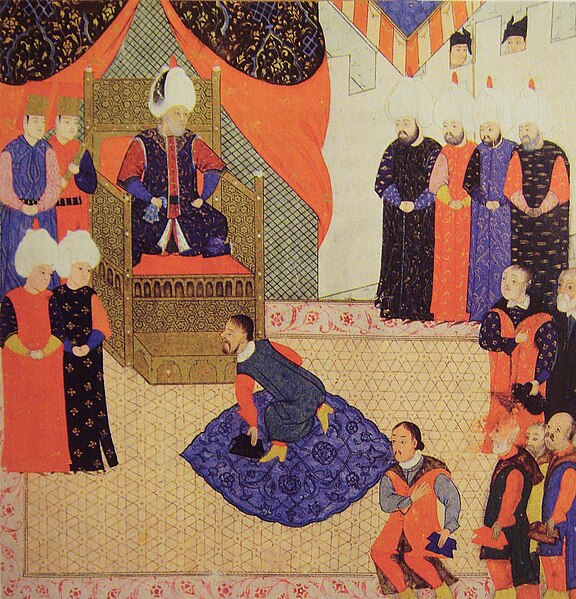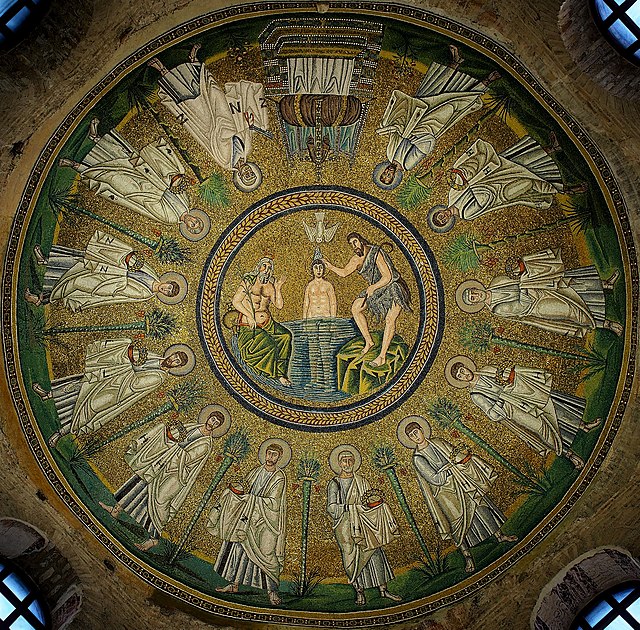Unitarianism, as a Christian denominational family of churches, was first defined in Poland-Lithuania and Transylvania in the late 16th century. It was then further developed in England and America until the early 19th century, although theological ancestors are to be found as far back as the early days of Christianity. It matured and reached its classical form in the middle 19th century. Later historical development has been diverse in different countries.
King John Sigismund of Hungary with Suleiman the Magnificent in 1556.
The Unitarian Church in Dârjiu, Romania
Interior of the Gothic church in Dârjiu
The Inlăceni Hungarian Runes. Inscription (1668) reads "Egy az Isten Georgyius Musnai diakon", or "God is One Georgius Musnai deacon."
Arianism is a Christological doctrine considered heretical by all mainstream branches of Christianity. It is first attributed to Arius, a Christian presbyter who preached and studied in Alexandria, Egypt. Arian theology holds that Jesus Christ is the Son of God, who was begotten by God the Father with the difference that the Son of God did not always exist but was begotten/made before time by God the Father; therefore, Jesus was not coeternal with God the Father, but nonetheless Jesus began to exist outside time.
Imagined portrait of Arius; detail of a Cretan School icon, c. 1591, depicting the First Council of Nicaea
Constantine burning Arian books, illustration from a compendium of canon law, c. 825
Once the orthodox Trinitarians succeeded in defeating Arianism, they censored any signs that the perceived heresy left behind. This mosaic in the Basilica of Sant'Apollinare Nuovo in Ravenna has had images of the Arian king, Theoderic, and his court removed. On some columns their hands remain.
The ceiling mosaic of the Arian Baptistery, built in Ravenna by the Ostrogothic King Theodoric the Great.








